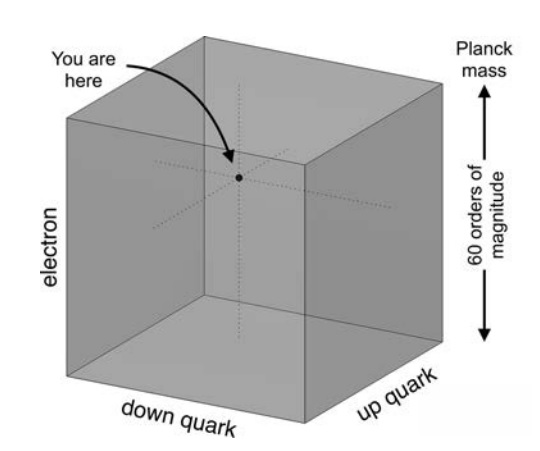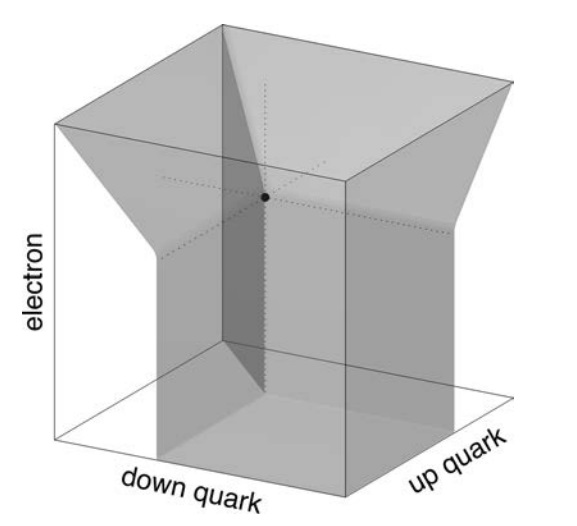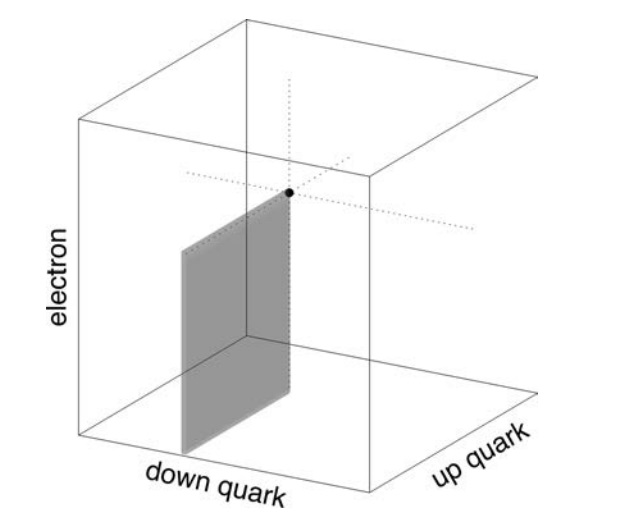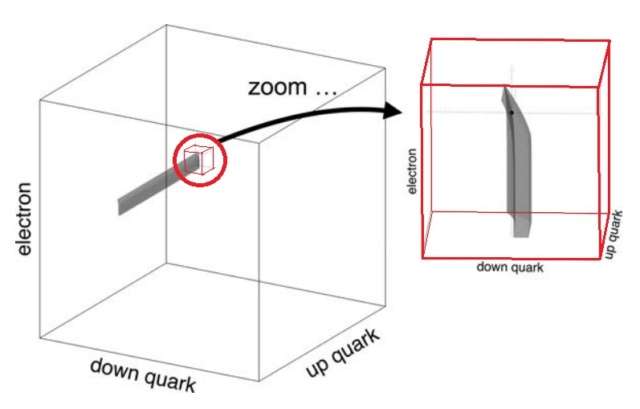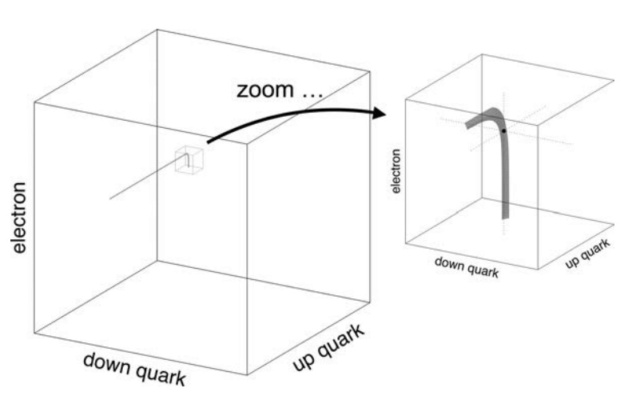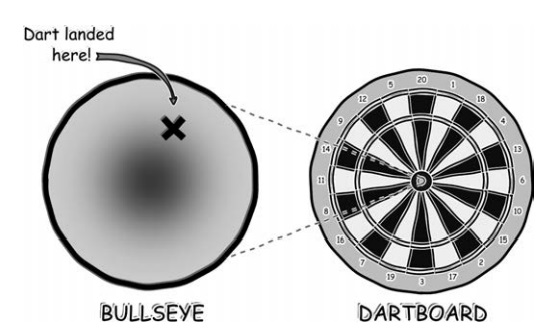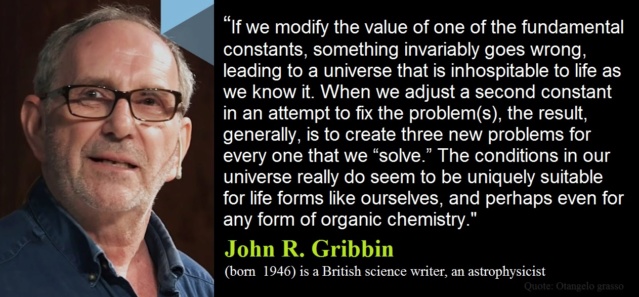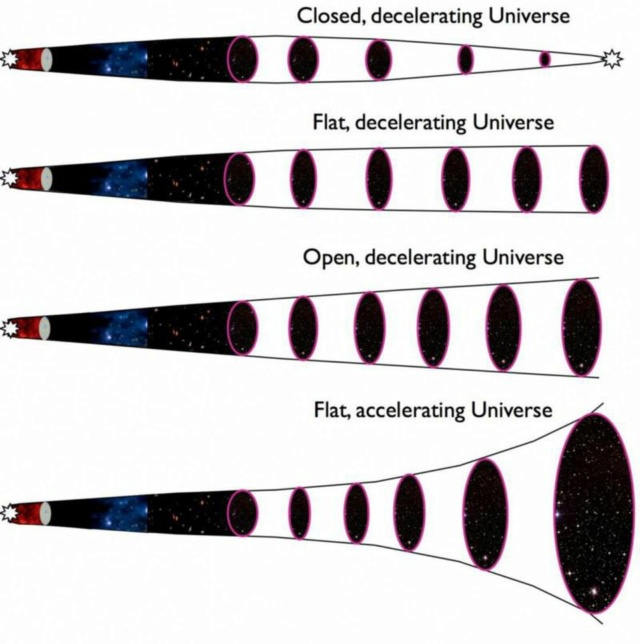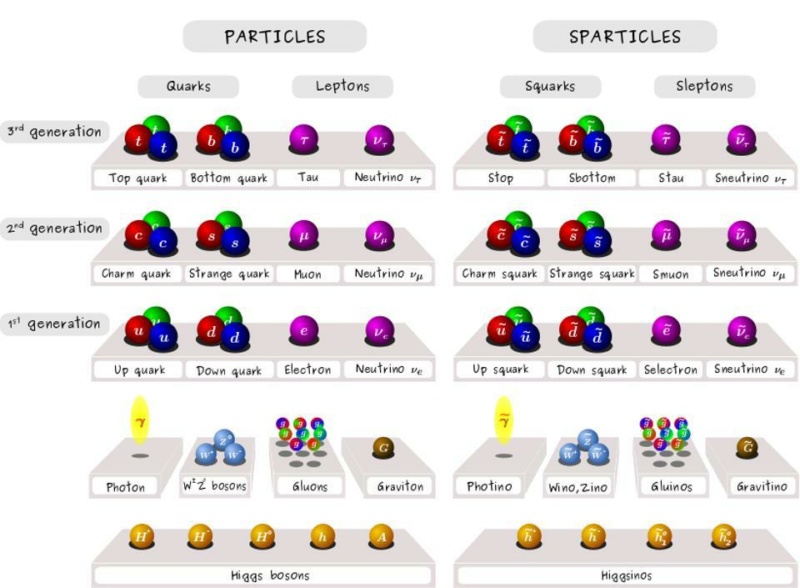https://reasonandscience.catsboard.com/t1277-fine-tuning-of-the-universe
LIST OF FINE-TUNING PARAMETERS
Is fine-tuning real?
Objections to the fine-tune argument
How much is the universe finely tuned for life?
Answering to objections to the fine-tuning argument
RTB Design Compendium (2009)
https://reasons.org/explore/publications/articles/rtb-design-compendium-2009
Hugh Ross Probability Estimates for the Features Required by Various Life Forms 2008
Less than 1 chance in 10^1032 exists that even one life-support planet would occur anywhere in the universe without invoking divine miracles.
https://d4bge0zxg5qba.cloudfront.net/files/compendium/compendium_Part3_ver2.pdf
Hugh Ross Probability Estimates on Different Size Scales For the Features Required by Advanced Life 2008
Less than 1 chance in 10^390 exists that even one planet containing the necessary kinds of life would occur anywhere in the universe without invoking divine miracles.
https://d4bge0zxg5qba.cloudfront.net/files/compendium/compendium_Part4_ver2.pdf
“Local” Planetary Conditions
But even in a universe fine-tuned at the cosmic level, local conditions can still vary dramatically. As it happens, even in this fine-tuned universe, the vast majority of locations in the universe are unsuited for life. In The
Privileged Planet, Guillermo Gonzalez and Jay Richards identify 12 broad, widely recognized fine-tuning factors required to build a single, habitable planet. All 12 factors can be found together in the Earth. There are
probably many more such factors. In fact, most of these factors could be split out to make sub-factors, since each of them contributes in multiple ways to a planet’s habitability.
https://www.discovery.org/m/securepdfs/2018/12/List-of-Fine-Tuning-Parameters-Jay-Richards.pdf
Neil A. Manson: The Fine-Tuning Argument 21 January 2009
Modern physics also revealed that specific kinds of particles compose the universe and specific kinds of forces govern these particles, and that the natures of these particles and forces determine large-scale processes such as cosmic expansion and star formation.
Mp (mass of the proton) 938.28 MeV
Mn (mass of the neutron) 939.57 MeV
c (the speed of light) 2.99792458 × 108m1s−1
G (the Newtonian gravitational constant) 6.6742 × 10–11 m3kg−1s−2
Looking at the very precise numerical values of parameters such as these, some physicists asked what the universe would have been like if the values had been slightly different. More specifically, for many an individual parameter, they asked what the universe would be like if that parameter were varied while the remaining parameters were held fixed. The answer, to the surprise of many, was that the universe would not have been the sort of place in which life could emerge – not just the very form of life we observe here on Earth, but any conceivable form of life. In many cases, the cosmic parameters were like the just-right settings on an old-style radio dial: if the knob were turned just a bit, the clear signal would turn to static. As a result, some physicists started describing the values of the parameters as ‘fine-tuned’ for life.
Claim: If the range is infinite, then any finite range of values might be considered to have zero probability of being selected.
Reply: An intelligent designer can however chose amongst an infinite set of possibilities, the one that will provide a functional, meaningful result.
https://compass.onlinelibrary.wiley.com/doi/abs/10.1111/j.1747-9991.2008.00188.x
Cosmology has unearthed extraordinarily low tolerance for the fundamental physical constants.The Universe is wired in such a way that life in it is possible. That includes the fine-tuning of the Laws of physics, the physical constants, the initial conditions of the universe, the Big Bang, the cosmological constant, the subatomic particles, atoms, the force of gravity, Carbon nucleosynthesis, the basis of all life on earth, the Milky Way Galaxy, the Solar System, the sun, the earth, the moon, water, the electromagnetic spectrum, biochemistry. What could have caused the Universe to wind up this way?
Fine-tuning of the Laws of physics to get a life-permitting universe
Fine-tuning of the physical constants
Fine-tuning of the initial conditions of the universe
Fine-tuning of the Big Bang
Fine-tuning of the cosmological constant
Fine-tuning of the subatomic particles
Fine-tuning of atoms
Fine-tuning of the force of gravity
Fine-tuning of Carbon nucleosynthesis, the basis of all life on earth
Fine-tuning of the Milky Way Galaxy
Fine-tuning of the Solar System
Fine-tuning of the sun
Fine-tuning of the earth
Fine-tuning of the moon
Fine-tuning of water
Fine-tuning of the electromagnetic spectrum
Fine-tuning in biochemistry
The odds to have life from non-life by natural means:
The Big Bang
1. Gravitational constant G: 1/10^60
2. Omega Ω, the density of dark matter: 1/10^62 or less
3. Hubble constant H0: 1 part in 10^60
4. Lambda: the cosmological constant: 10^122
5. Primordial Fluctuations Q: 1/100,000
6. Matter-antimatter symmetry: 1 in 10,000,000,000
7. The low-entropy state of the universe: 1 in 10^10^123
Fine-tuning of the fundamental forces of the universe to permit life
1. Gravity: 1 part in 10^21
2. Strong force: 1 part in 10^12
3. Weak force: 1 chance out of 1000
4. Electromagnetic force: 1 chance out of 1000
Masses of atoms: the fine-tuning of the masses of up and down quarks: 1 part in 10^21 .
Carbon synthesis: 1 part in 100
Life supporting planet, like the earth
One life-support planet: Less than 1 chance in 10^390
A minimal life form, like Pelagibacter Ubique
Probability for the occurrence of a functional proteome, with 1350 proteins, average 300 Amino Acids size, by unguided means: 10^722000
Probability for occurrence of connecting all 1350 proteins in the right, functional order is about 4^3600
Probability for occurrence to have both, a minimal proteome, and interactome: about 10^725600
Luke A. Barnes The Fine-Tuning of the Universe for Intelligent Life June 11, 2012
The parameters of the standard model remain some of the best understood and most impressive cases of fine-tuning.
https://arxiv.org/pdf/1112.4647.pdf
Jason Waller Cosmological Fine-Tuning Arguments 2020, page 120
Some examples of fine-tuning include:
• the masses of the fundamental particles
• the relative strengths of the fundamental forces
• the quantity of matter in the universe
• the density of matter in the early universe
• Planck’s constant dividing the quantum from the classical worlds
• the existence of exactly three spatial dimensions
• the law-like nature of the universe
• the psychophysical laws (and perhaps emergent properties)
Fine-tuning arguments in short sentences
https://reasonandscience.catsboard.com/t3169-fine-tuning-arguments-in-short-sentences
Fine-tuning of the universe
https://reasonandscience.catsboard.com/t1277-fine-tuning-of-the-universe
Laws of Physics, fine-tuned for a life-permitting universe
https://reasonandscience.catsboard.com/t1336-laws-of-physics-fine-tuned-for-a-life-permitting-universe
Fine-tuning of the physical constants
https://reasonandscience.catsboard.com/t3134-fine-tuning-of-the-physical-constants#8607
Fine tuning of the initial conditions of the universe
https://reasonandscience.catsboard.com/t1964-fine-tuning-of-the-initial-conditions-of-the-universe
Fine-tuning of the Big Bang
https://reasonandscience.catsboard.com/t1866-fine-tuning-of-the-big-bang
Fine-tuning of the cosmological constant
https://reasonandscience.catsboard.com/t1885-fine-tuning-of-the-cosmological-constant
Fine-tuning of the fundamental forces of the universe
https://reasonandscience.catsboard.com/t1339-fine-tuning-of-the-fundamental-forces-of-the-universe
Quark fine-tuning
https://reasonandscience.catsboard.com/t2538-quark-fine-tuning
Fine-tuning of atoms
https://reasonandscience.catsboard.com/t2763-fine-tuning-of-atoms
The Force of Gravity
https://reasonandscience.catsboard.com/t1366-the-force-of-gravity-evidence-of-fine-tuning
Fine-tuning of Carbon nucleosynthesis, the basis of all life on earth
https://reasonandscience.catsboard.com/t1502-carbon-the-basis-of-all-life-on-earth
Matter-Antimatter Asymmetry
https://reasonandscience.catsboard.com/t1935-matter-antimatter-asymmetry
Fine Tuning of our Galaxy
https://reasonandscience.catsboard.com/t1417-fine-tuning-of-our-galaxy
Fine Tuning of the Solar System
https://reasonandscience.catsboard.com/t1416-fine-tuning-of-the-solar-system
The sun - just right for life
https://reasonandscience.catsboard.com/t2550-the-sun-just-right-for-life
FineTuning of the earth
https://reasonandscience.catsboard.com/t1415-finetuning-of-the-earth
Water is fine-tuned for life
https://reasonandscience.catsboard.com/t1532-water-is-fine-tuned-for-life
The moon, essential for life on earth
https://reasonandscience.catsboard.com/t2548-the-moon-essential-for-life-on-earth
The electromagnetic spectrum, fine-tuned for life
https://reasonandscience.catsboard.com/t2033-the-electomagnetic-spectrum-fine-tuned-for-life
Is the universe hostile to life ?
https://reasonandscience.catsboard.com/t1896-is-the-universe-hostile-to-life
Biochemical fine-tuning - essential for life
https://reasonandscience.catsboard.com/t2591-biochemical-fine-tuning-essential-for-life
RTB Design Compendium (2009) 5
https://reasons.org/explore/publications/articles/rtb-design-compendium-2009
Hugh Ross: Fine-Tuning for Life in the Universe 2008
140 features of the cosmos as a whole (including the laws of physics) that must fall within certain narrow ranges to allow for the possibility of physical life’s existence. 1
https://d4bge0zxg5qba.cloudfront.net/files/compendium/compendium_part1.pdf
Hugh Ross Fine-Tuning for Intelligent Physical Life 2008
402 quantifiable characteristics of a planetary system and its galaxy that must fall within narrow ranges to allow for the possibility of advanced life’s existence. This list includes comment on how a slight increase or decrease in the value of each characteristic would impact that possibility. That includes parameters of a planet, its planetary companions, its moon, its star, and its galaxy must have values falling within narrowly defined ranges for physical life of any kind to exist.2
https://d4bge0zxg5qba.cloudfront.net/files/compendium/compendium_part2.pdf
922 characteristics of a galaxy and of a planetary system physical life depends on and offers conservative estimates of the probability that any galaxy or planetary system would manifest such characteristics. This list is divided into three parts, based on differing requirements for various life forms and their duration. 3 and 4
Hugh Ross Probability Estimates for the Features Required by Various Life Forms 2008
Less than 1 chance in 10^1032 exists that even one life-support planet would occur anywhere in the universe without invoking divine miracles.
https://d4bge0zxg5qba.cloudfront.net/files/compendium/compendium_Part3_ver2.pdf
Hugh Ross Probability Estimates on Different Size Scales For the Features Required by Advanced Life 2008
Less than 1 chance in 10^390 exists that even one planet containing the necessary kinds of life would occur anywhere in the universe without invoking divine miracles.
https://d4bge0zxg5qba.cloudfront.net/files/compendium/compendium_Part4_ver2.pdf
Dr. Walter L. Bradley: Is There Scientific Evidence for the Existence of God? How the Recent Discoveries Support a Designed Universe 20 August 2010
Needs Statement for a Suitable Universe
An abbreviated list of requirements for a universe suitable to support life of any imaginable type must include the following items:
Order to provide the stable environment that is conducive to the development of life, but with just enough chaotic behavior to provide a driving force for change.
Sufficient chemical stability and elemental diversity to build the complex molecules necessary for essential life functions: processing energy, storing information, and replicating. A universe of just hydrogen and helium will not "work."
Predictability in chemical reactions, allowing compounds to form from the various elements.
A "universal connector," an element that is essential for the molecules of life. It must have the chemical property that permits it to react readily with almost all other elements, forming bonds that are stable, but not too stable, so disassembly is also possible. Carbon is the only element in our periodic chart that satisfies this requirement.
A "universal solvent" in which the chemistry of life can unfold. Since chemical reactions are too slow in the solid state, and complex life would not likely be sustained as a gas, there is a need for a liquid element or compound that readily dissolves both the reactants and the reaction products essential to living systems: namely, a liquid with the properties of water.
A stable source of energy to sustain living systems in which there must be photons from the sun with sufficient energy to drive organic, chemical reactions, but not so energetic as to destroy organic molecules (as in the case of highly energetic ultraviolet radiation).
A means of transporting the energy from the source (like our sun) to the place where chemical reactions occur in the solvent (like water on Earth) must be available. In the process, there must be minimal losses in transmission if the energy is to be utilized efficiently.
https://web.archive.org/web/20110805203154/http://www.leaderu.com/real/ri9403/evidence.html#ref21
Multi Fine-tuning
https://reasonandscience.catsboard.com/t2810-multi-tuning
John Gribbin and Martin Rees: Cosmic coincidences : dark matter, mankind, and anthropic cosmology 1989
In most analyses of the fine-tuning of the force strengths and constants of nature, only one parameter is adjusted at a time (to make the problems more tractable). This would correspond to changing one dial at a time on our Universe-Creating Machine while leaving the other dials unchanged. Even taken individually, each of these examples of fine-tuning is impressive. But in the real universe, the values of all the constants and force strengths must be satisfied simultaneously to have a universe hospitable to life. If we modify the value of one of the fundamental constants, something invariably goes wrong, leading to a universe that is inhospitable to life as we know it. When we adjust a second constant in an attempt to fix the problem(s), the result, generally, is to create three new problems for everyone that we “solve.” The conditions in our universe really do seem to be uniquely suitable for life forms like ourselves, and perhaps even for any form of organic chemistry. Changes in the relative strengths of gravity and electromagnetism affect not only cosmological processes but also galaxies, stars, and planets. The strong and weak nuclear forces determine the composition of the universe and, thus, the properties of galaxies, stars, and planets. As a result, we ultimately can’t divorce the chemistry of life from planetary geophysics or stellar astrophysics. Although we have only scratched the surface, it should be clear that there are many examples of “cosmic-scale” fine-tuning in chemistry, particle physics, astrophysics, and cosmology. Most published discussions of such fine-tuning are limited to the requirements for life, but cosmic finetuning extends well beyond mere habitability.
https://3lib.net/book/3714301/2c66a1
Barnes: A Fortunate Universe Life in a Finely Tuned Cosmos 2016 page 274
Life requires a number of different constants to be related to each other in unusual and precise ways. There never was a time when fine-tuning investigations varied just one parameter. The original anthropic principle paper by Brandon Carter in 1974 identified a peculiar relationship between the mass of the proton, the mass of the electron, the strength of gravity, and the strength of electromagnetism. Physicists William Press and Alan Lightman showed in 1983 that the same coincidence must hold for stars to emit photons with the right energy to power chemical reactions. This is quite a coincidence, given the number of cosmic dials one must tune for the energy of a photon of light emerging from a star to be roughly equal to the energy of chemical bonds.
https://3lib.net/book/3335826/1b6fa8
Codata lists about 360 different fine-tune constants, which have to be just right in order to have a life-permitting universe.
Fundamental Physical Constants --- Complete Listing 2018 CODATA adjustment
https://physics.nist.gov/cuu/Constants/Table/allascii.txt?fbclid=IwAR1wllIggtvjUltZUyrNeLQO0c67keXqybFrDjwKZ5NFtuIW_bwm6YBf1RU
Luke A. Barnes: Fine-Tuning in the Context of Bayesian Theory Testing 13 Jul 2017
The parameters of the standard model of particle physics are “unnaturally” small (in various technical senses), which has driven much of the search for physics beyond the standard model. Of particular interest is the fine-tuning of the universe for life, which suggests that our universe’s ability to create physical life forms is improbable and in need of explanation. Small changes to the fundamental constants of nature and the initial conditions of the cosmos would have dramatic effects on the universe. In particular, the complexity and stability required by any known or thus-far conceived form of life can be rather easily erased. For example, the masses of the fundamental constituents of ordinary matter — up quarks, down quarks and electrons — must be constrained to lie in a very small section of parameter space for nuclei, atoms, molecules, and chemistry to be possible at all. Fine-tuning demonstrates that a life-permitting universe is extraordinarily improbable. A universe drawn blindly from a big barrel of possible universes is unlikely to have the right forces, particles, and cosmic initial conditions for life to develop, It is an interesting fact, that this search for other ways that the universe could have been has overwhelmingly found lifelessness. This lifelessness is surprising in the way that any fine-tuned parameter in physics is surprising: it is improbable.
Jason Waller: Cosmological Fine-Tuning Arguments 2020 3
it has been argued that finetuning is evidence for:
• the existence of God
• the existence of many other universes (a multiverse)
• the truth of string theory (M-theory)
• the claim that everything that is possible is actual
• the claim that there are (currently unknown) “life-oriented” laws of physics
• the claim that the laws of nature are logically necessary
• the claim that the world we experience is not real and we exist in some kind of simulated computer program (e.g., “Matrix”)
• the claim that the science is wrong (employing Hume’s famous “Miracle Test”).
Had God a Choice?
If any of several fundamental physical constants were only slightly different, the Universe would be unlikely to lead to the formation of nuclear, atomic, or cosmic structures which allow for chemical elements, stellar burning, and finally, life.
https://www.proquest.com/docview/2124812833
Hawking: “Brief History of Time”1988:
“The remarkable fact is that the values of these numbers seem to have been very finely adjusted to make possible the development of life”
Paul Davies: Cited by Strauss in "The Creator Revealed", p28
"It is hard to resist the impression of something - some influence capable of transcending spacetime and the confinements of relativistic causality - possessing an overview of the entire cosmos at the instant of its creation, and manipulating all the causally disconnected parts to go bang with almost exactly the same vigour at the same time, and yet not so exactly coordinated as to preclude the small scale, slight irregularities that eventually formed the galaxies, and us."
http://hyperphysics.phy-astr.gsu.edu/Nave-html/Faithpathh/Davies.html#c12
S.Meyer: The return of the God hypothesis, page 160
Fine-tuning in physics refers to the discovery that many properties of the universe fall within extremely narrow and improbable ranges that turn out to be absolutely necessary for complex forms of life, or even complex chemistry, and thus any conceivable form of life, to exist. Indeed, since the 1950s, physicists have discovered that life in the universe depends upon a highly improbable set of forces and features as well as an extremely improbable balance among many of them. The precise strengths of the fundamental forces of physics, the arrangement of matter and energy at the beginning of the universe, and many other specific features of the cosmos appear delicately balanced to allow for the possibility of life. If any one of these properties were altered ever so slightly, complex chemistry and life simply would not exist. The fine-tuning of these properties has puzzled physicists not only because of their extreme improbability, but also because there doesn’t seem to be any necessary physical or logical reason why they have to be as they are. Philosophers of science call such fine-tuning features “contingent” properties, since they could conceivably have been different without violating either the fundamental laws of physics or any necessary principle of logic or mathematics. We apparently live in a kind of “Goldilocks universe,” where the fundamental forces of physics have just the right strengths, the contingent properties of the universe have just the right characteristics, and the initial distribution of matter and energy at the beginning exhibited just the right configuration to make life possible. These facts taken together are so puzzling that physicists have given them a name—the fine-tuning problem.
Philip Goff Did the universe design itself? 24 November 2018
Many philosophers and scientists believe that we need an explanation as to why the laws of physics and the initial conditions of the universe are fine-tuned for life. The standard two options are: theism and the multiverse hypothesis.
https://link.springer.com/article/10.1007/s11153-018-9692-z
Luke A. Barnes: Fine-Tuning in the Context of Bayesian Theory Testing 13 Jul 2017
The parameters of the standard model of particle physics are “unnaturally” small (in various technical senses), which has driven much of the search for physics beyond the standard model. Of particular interest is the fine-tuning of the universe for life, which suggests that our universe’s ability to create physical life forms is improbable and in need of explanation. Small changes to the fundamental constants of nature and the initial conditions of the cosmos would have dramatic effects on the universe. In particular, the complexity and stability required by any known or thus-far conceived form of life can be rather easily erased. For example, the masses of the fundamental constituents of ordinary matter — up quarks, down quarks and electrons — must be constrained to lie in a very small section of parameter space for nuclei, atoms, molecules, and chemistry to be possible at all. Fine-tuning demonstrates that a life-permitting universe is extraordinarily improbable. A universe drawn blindly from a big barrel of possible universes is unlikely to have the right forces, particles, and cosmic initial conditions for life to develop, It is an interesting fact, that this search for other ways that the universe could have been has overwhelmingly found lifelessness. This lifelessness is surprising in the way that any fine-tuned parameter in physics is surprising: it is improbable.
https://arxiv.org/pdf/1707.03965.pdf
Leonard Susskind The Cosmic Landscape: String Theory and the Illusion of Intelligent Design 2006, page 100
By varying the Higgs field, we can add diversity to the world; the laws of nuclear and atomic physics will also vary. A physicist from one region would not entirely recognize the Laws of Physics in another. But the variety inherent in the variations of the Higgs field is very modest. What if the number of variable fields were many hundreds instead of just one? This would imply a multidimensional Landscape, so diverse that almost anything could be found. Then we might begin to wonder what is not possible instead of what is. As we will see this is not idle speculation.
https://3lib.net/book/2472017/1d5be1
The number of possible fine-tune parameters and constants is infinite
1. The values, constants, and parameters for a life-permitting universe must exist within a finite range for the existence of biological life to be possible.
2. These constants and fine-tune parameters could have taken any of an infinite number of different values.
3. The probability of it occurring by chance approaches close to 0, but is in practical terms, factually zero.
4. The best explanation is an intelligent agent that had a goal in mind, that is to create contingent beings, designed our life-permitting universe.
1. The existence of a life-permitting universe is very improbable on naturalism and very likely on theism.
2. A universe formed by naturalistic unguided means would have its parameters set randomly, and with high probability, there would be no universe at all. ( The fine-tune parameters for the right expansion-rate of the universe would most likely not be met ) In short, a randomly chosen universe is extraordinarily unlikely to have the right conditions for life.
3. A life-permitting universe is likely on theism, since a powerful, extraordinarily intelligent designer has the ability of foresight, and knowledge of what parameters, laws of physics, and finely-tuned conditions would permit a life-permitting universe.
4. Under bayesian terms, design is more likely rather than non-design. Therefore, the design inference is the best explanation for a finely tuned universe.
1. The Laws of physics and constants, the initial conditions of the universe, the expansion rate of the Big bang, atoms and the subatomic particles, the fundamental forces of the universe, stars, galaxies, the Solar System, the earth, the moon, the atmosphere, water, and even biochemistry on a molecular level, and the bonding forces of molecules like Watson-Crick base-pairing are finely tuned in an unimaginably narrow range to permit life. In 2008, Hugh Ross mentioned 140 features of the cosmos as a whole (including the laws of physics), and over 1300 quantifiable characteristics of a planetary system and its galaxy that must fall within extremely narrow ranges to allow for the possibility of advanced life’s existence. Since then, that number has doubled.
2. Penrose estimated that the odds of the initial low entropy state of our universe occurring by chance alone are on the order of 1 in 10 10^123. Ross calculated that less than 1 chance in 10^1032 power exists that even one life-support planet would occur anywhere in the universe without invoking divine miracles. There is an estimation of 10^80 power of atoms in the universe.
3. Of course, if there is a physical necessity, that does not permit a non-life-permitting universe, in other words, if the state of affairs is, that the universe could not other than have exactly these parameters to permit life, then any statistical probability calculations are meaningless. If the state of affairs however can change, then this fact demands a very good explanation.
4. There are infinite possible ways that the values fundamental constants of the standard models could have been chosen. In fact, Paul Davies states: “There is not a shred of evidence that the Universe is logically necessary. Indeed, as a theoretical physicist I find it rather easy to imagine alternative universes that are logically consistent, and therefore equal contenders of reality”
5. The laws of physics, constants, and the fine-tune parameters can change. Not all laws of nature can become scientific laws because many will not create a scientist. The probability of randomly selecting the correct values for these parameters is so infinitesimally small that it is unreasonable to think that sheer luck alone can be the explanation for cosmological fine-tuning, but likely on theism, since a powerful, extraordinarily intelligent designer has the ability of foresight, and knowledge of what parameters, laws of physics, and finely-tuned conditions would permit a life-permitting universe. The existence of our universe, and us, is very improbable on naturalism and very likely on theism.
6. Therefore the fact that they are set up to instantiate a life-permitting universe is best explained by a lawgiver and fine tuner. Which is God.
1. If you throw a universe together at random, you get a dead universe.
2. So in fact, the universe was not thrown together at random.
3. Of course, we can appeal to physics that we don't even know, and posit a multiverse, but that would just be a multiverse of the gaps argument.
4. The best explanation is that an intelligent designer created a life-permitting universe for his own purposes.
1. There are four fundamental forces that describe every interaction in nature. The strong nuclear force, that holds the nucleus of the atoms together, is precisely 137 times as strong as the electromagnetic force. It is 10 million times stronger than the weak nuclear force, and 10^38 power stronger than the gravitational force. The precise relationship of these forces makes it possible for our universe to be filled with atoms, chemistry, molecules, and life.
2. If naturalism were true, we should expect a dead and lifeless universe. It would be typical, and not exceptional, and there would be no mechanism to secure these forces to be stable, and permit that life-permitting universe.
3. The parameters are however unexpectedly exceptional, with highly non-generic features, extremely unlikely, and life-permitting. That would have to be expected if intelligent design were true.
4. Therefore, our universe is better explained by an intelligent designer, rather than natural forces.
1. Varying the free parameters of the standard models of particle physics and cosmology, and the universe would be typical and unexceptional. It would be lifeless. Naturalism overwhelmingly expects a dead universe.
2. The parameters are however unexpectedly exceptional, and extremely unlikely, and life-permitting. That would have to be expected if intelligent design were true.
3. Therefore, our universe is better explained by intelligent design, rather than naturalism.
1. The existence of a life-permitting universe is very improbable on naturalism, and not comparably improbable on creationism/intelligent design.
2. A universe formed by naturalistic unguided means would have its parameters set randomly – not in the sense of being stochastic, but in the sense of setting parameters that would produce non-life permitting universes or no universe at all. ( If the initial conditions and fine-tune parameters for the right expansion rate of the universe were not met ) In short, a randomly chosen universe is extraordinarily unlikely to have the right conditions for life.
3. A life-permitting universe is likely on creationism/intelligent design, since a powerful, extraordinarily intelligent designer has the ability of foresight, and knowledge of what parameters, laws of physics, and finely-tuned conditions would permit a life-permitting universe.
4. Under bayesian terms, design is more likely rather than non-design. Therefore, the design inference is the best explanation for a finely tuned universe.
1. The more statistically improbable something is, the less it makes sense to believe that it just happened by blind chance.
2. In order to have a universe, able to host various forms of life on earth, 1364 (!!) different features and fine-tune parameters must be just right.
3. Statistically, it is practically impossible, that the universe was finely tuned to permit life by chance.
4. 4. Therefore, an intelligent Designer is by far the best explanation of the origin of our life-permitting universe.
1. The characteristics, forces and phenomena of the universe are fine-tuned to such a degree that human life is possible. That is to say that if any characteristics were any more than slightly (and in some cases even slightly) changed, human life would be impossible.
2. The characteristics, forces, and phenomena didn’t HAVE TO be this way. There is no law governing why these characteristics, forces, and phenomena turned out the way they are. They could have been different.
1. The universe permits life, which depends upon finely tuned or highly improbable conditions, parameters, or configurations of matter. If we have just one constant that can admit an infinite range of values and must exist within a finite range for the universe to be life-permitting, then the probability of this occurring by chance approaches arbitrarily close to 0. This fact is an extremely strong one in itself. Adding additional requirements does not actually alter the final probability, because one cannot go lower. Imagine the situation this way: if we think of each independent constant as a different dial on a “universe creating machine,” then we can imagine that the values for all of the other constants have been set and only one constant remains. Imagine that the last dial has an infinite range of options but only a finite number of “life-permitting” values. In this case, the probability of it occurring by chance approaches arbitrarily close to 0 or is as improbable as anything can be without being logically impossible. Adding additional conditions does not actually lower the probability any further.
2. It has improbable conditions, parameters, and configurations of matter through the fine-tuning of the laws and constants of physics and the initial conditions of the universe and these finely tuned parameters permit life.
3. The best explanation is an intelligent agent that designed the universe.
1. If our universe is random, then it is very unlikely that it permits life.
2. Our universe permits life.
3. Therefore, the existence of our universe is very likely due to something other than chance.
1.The fine-tuning of the universe is due either to physical necessity, chance, or design.
2. It is not due to physical necessity or chance.
3. Therefore, it is due to design.
1. The initial conditions of the universe, subatomic particles, the Big Bang, the fundamental forces of the universe, the Solar System, the earth and the moon, are finely tuned to permit life. Over 150 fine-tuning parameters are known.
2. Finetuning is either due to chance, necessity, or design.
3. Finetuning is extremely unlikely due to chance or necessity. Therefore, it is most probably due to a powerful creator which did set up the universe in the most precise exact fashion to permit life on earth.
1. The existence of the fine-tuning is not improbable under theism.
2. The existence of the fine-tuning is very improbable under the atheistic hypothesis.
3. it follows that the fine-tuning data provides strong evidence to favor the design hypothesis over the atheistic single-universe hypothesis.
The argument of the fine-tuning of the Universe Constants of the Big Bang, the Universe, the fundamental forces, the solar system, and the earth
1. Parameter Ratio
Ratio of Electrons: Protons 1:10^37
Ratio of Electromagnetic Force: Gravity 1:10^40
Expansion Rate of Universe 1:10^55
Mass Density of Universe1 1:10^59
Cosmological Constant 1:10^120
2. These numbers represent the maximum deviation from the accepted values, that would either prevent the universe from existing now, not having matter or be unsuitable for any form of life.
3. One part in 10^37 is such an incredibly sensitive balance that it is hard to visualize. The following analogy might help: Cover the entire North American continent in dimes all the way up to the moon, a height of about 239,000 miles (In comparison, the money to pay for the U.S. federal government debt would cover one square mile less than two feet deep with dimes.). Next, pile dimes from here to the moon on a billion other continents the same size as North America. Paint one dime red and mix it into the billions of piles of dimes. Blindfold a friend and ask him to pick out one dime. The odds that he will pick the red dime are one in 10^37. (Dr. Hugh Ross)
4. “If we modify the value of one of the fundamental constants, something invariably goes wrong, leading to a universe that is inhospitable to life as we know it. When we adjust the second constant in an attempt to fix the problem(s), the result, generally, is to create three new problems for everyone that we “solve.” The conditions in our universe really do seem to be uniquely suitable for life forms like ourselves, and perhaps even for any form of organic complexity." Gribbin and Rees, “Cosmic Coincidences”, p. 146
5. The 90 (registered) constants prove an intelligent designer. Without such finely tuned constants, the universe would not exist.
6. This Supreme Designer of these constants and of the universe must be God, the most intelligent person.
7. God exists.
The argument of mathematical precision
1. Einstein once wondered: "How is it possible that mathematics, a product of human thought that is independent of experience, fits so excellently the objects of physical reality?" And similarly his book 'The Mysterious Universe,' the English physicist Sir James Jeans describes the flawless order in the cosmos: "A scientific study of the universe has suggested a conclusion, which may be summed up ... in the statement that the universe appears to have been designed by a pure mathematician."
Laws reflect mathematical symmetries found in Nature. For example,
a. Pauli’s exclusion principle describes the identity of electrons.
b. Noether's theorem connects some conservation laws to certain symmetries.
c. Lorentz transformations correspond to the rotational symmetry of space-time.
2. Every planet in the universe, large and small, is the critically important part of a larger order. Not one of their positions in space or any of their movements is random eg to keep everything circling at particular distances.
3. The distance between the Earth and our moon ensures many important balances and is extremely vital for the continuation of life on Earth, eg the tides flowing, the growth of the flora.
If the moon were much closer [to the Earth], it would crash into our planet, if much farther away, it would move off into space. If it were much closer, the tides that the moon causes on the earth would become dangerously larger. Ocean waves would sweep across low-lying sections of the continents.
4. There are 93 constants in the fine-tuning of the Universe, Martin Rees discusses six dimensionless constants.[1]
5. N, the ratio of the strengths of gravity to that of electromagnetism, is 1,000,000,000,000,000,000,000,000,000,000,000,000. According to Rees, if it were smaller, only a small and short-lived universe could exist.[1]
5b. Epsilon, the strength of the force binding nucleons into nuclei, is 0.07. If it were 0.06, the only hydrogen could exist, and complex chemistry would be impossible. If it were 0.08, no hydrogen would exist, as all the hydrogen would have been fused shortly after the big bang.[1]
5c. Omega, also known as the Density parameter, is the relative importance of gravity and expansion energy in the Universe. If gravity were too strong compared with dark energy and the initial metric expansion, the universe would have collapsed before life could have evolved. On the other side, if gravity were too weak, no stars would have formed.[1]
5d. Lambda is the cosmological constant. It describes the ratio of the density of dark energy to the critical energy density of the universe, given certain reasonable assumptions such as positing that dark energy density is constant. Lambda is around 0.7. This is so small that it has no significant effect on cosmic structures that are smaller than a billion light-years across. If it were extremely large, stars would not be able to form. [1]
5e. Q, the ratio of the gravitational energy required to pull a large galaxy apart to the energy equivalent of its mass, is around 1/100,000. If it is too small, no stars can form. If it is too large, no stars can survive because the universe is too violent, according to Rees. [1]
5f. D, the number of spatial dimensions in spacetime, is three. Rees claims that life could not exist if there were two or four. [1]
6. a. Thus, scientific discoveries of innumerable patterns and many inter-related complexities of the universe cannot be explained as an appearance after mere accidents just as your computer hasn’t appeared by accident. Mathematical and rational symmetries are wonderful designs indicate a designer.
That wonderful designer that designed symmetries in the whole universe can be only God.
6. b. The universe can’t have come into existence without an all-powerful, super-knowledgeable great person the dictionary meaning of the term God.
7. God exists.
Problems with the cosmic inflation hypothesis at the beginning of the universe
1. The Big Bang was the first and most precisely fine-tuned event in all of the history of the universe. It had it to be adjusted to permit the right expansion rate, a balance between attraction and repulsion, between contraction and expansion, or it would have expanded too fast, and produced an unlimited expansion, and a void, lifeless universe, or it would have recollapsed back to a singularity, a Big Crunch. But also many different parameters had to be set just right in the first instants, right after the first nanosecond or two, in order to form stable atoms, or it would also be void of stars, planets, chemicals, and life.
2. The Lambda-CDM model, composed of six parameters, is a parameterization of the Big Bang. The standard model of particle physics contains 26 fundamental constants. A variety of physical phenomena, atomic, gravitational, and cosmological, must combine in the right way in order to produce a life-permitting universe.
3. Inflation is supposed to provide a dynamical explanation for the seemingly very fine-tuned initial conditions of the standard model of cosmology. It faces however ist own problems. There would have to be an inflation field with negative pressure, dominating the total energy density of the universe, dictating its dynamic, and so, starting inflation. It would have to last for the right period of time. And once inflation takes over, there must be some special reason for it to stop; otherwise, the universe would maintain its exponential expansion and no complex structure would form. It would also have to be ensured that the post-inflation field would not possess a large, negative potential energy, which would cause the universe to recollapse altogether. Inflation would also have to guarantee a homogeneous, but not perfectly homogeneous universe. Inhomogeneities had to be there for gravitational instability to form cosmic structures like stars, galaxies, and planets. Inflation would require an astonishing sequence of correlations and coincidences, to suddenly and coherently convert all its matter into a scalar field with just enough kinetic energy to roll to the top of its potential and remain perfectly balanced there for long enough to cause a substantial era of “deflation”. It would be far more likely, that the inflation field would drop its energy rather than be converted into baryons and ordinary matter, dump its energy into radiation. The odds to have a successful, finely adjusted inflaton field are maximally one in a thousand at its peak and drop rapidly. There is no physical model of inflation, and the necessary coupling between inflation and ordinary matter/radiation is just an unsupported hypothesis.
4. Designed setup is the best explanation for the life-permitting conditions at the beginning of the universe.
The Big Bang was the most precisely planned event in all of history
1. The odds to have a low-entropy state at the beginning of our universe was: 1 in 10^10123. To put that in perspective: There are roughly 8.51^25 power of atoms in one cubic meter. If we take that the distance from Earth to the edge of the observable universe is about 46.5 billion light-years in any direction, this size corresponds to a volume of about 3.566×10^80 m3. That means there would be roughly 10^102nd power of atoms if we filled the entire volume of the observable universe with atoms without leaving any space. An atom is 99,9999999999999% of empty space. If we were to fill its entire space with protons, there would be 2,5^13 power of protons filling it. So there would be roughly 10^115 power of protons in the entire universe. The odds to find one red proton in one hundred universes, the size of ours, filled with protons, is about the same as to get a universe with a low entropy state at the beginning, like ours. If we had to find our universe amongst an ensemble of almost infinite parallel universes, it would take 17000 billion years to find one which would be eventually ours.
2. Furthermore, at least 7 other parameters had to be finely adjusted, to name: the right gravitational constant, the density of dark matter, the Hubble constant, the primordial fluctuations, matter-antimatter symmetry, and 3 dimensions of space, plus time.
3. These physical factors are themselves independent of each other, and each must also be fine-tuned to the extreme. Together, the odds to have the right expansion rate is in the order above 10^400. That is picking one red atom amongst 4 entire universes the size of ours filled with atoms.
4. These odds are unimaginably improbable on naturalism and very likely on theism.
1. If the initial expansion rate of the universe had differed values, the universe would have either quickly collapsed back on itself or expanded too rapidly for stars to form. In either case, life would be impossible. The Universe is characterized by a delicate balance of its inventory, a balance between attraction and repulsion, between expansion and contraction.
2. Several parameters had to be just right. To name: The Gravitational constant, the density of dark matter, the Hubble constant, the cosmological constant, the primordial Fluctuations, Matter-antimatter symmetry, the low-entropy state of the universe had to be just right or our universe would either not exist, or be lifeless.
3. Fine-tuning is well explained by intelligent design, but an unwarranted ad-hoc explanation if someone posits a multiverse that originated randomly. Therefore, the action of a powerful intelligent design is the best explanation.
The fundamental forces of the universe are finely adjusted to permit life
1. If the strong nuclear force, the force that binds protons and neutrons together in an atom, had been stronger or weaker by as little as 5%, life would be impossible.
If gravity had been stronger or weaker by 1 part in 1040, then life-sustaining stars like the sun could not exist. This would most likely make life impossible.
If the neutron were not about 1.001 times the mass of the proton, all protons would have decayed into neutrons or all neutrons would have decayed into protons, and thus life would not be possible.
If the electromagnetic force were slightly stronger or weaker, life would be impossible, for a variety of different reasons.
2. Imaginatively, one could think of each instance of fine-tuning as a radio dial: unless all the dials are set exactly right, life would be impossible. Or, one could think of the initial conditions of the universe and the fundamental parameters of physics as a dart board that fills the whole galaxy, and the conditions necessary for life to exist as a small one-foot wide target: unless the dart hits the target, life would be impossible. The fact that the dials are perfectly set, or the dart has hit the target, strongly suggests that someone set the dials or aimed the dart, for it seems enormously improbable that such a coincidence could have happened by chance.
3. The fine-tuning argument is probably the most powerful current argument for the existence of God.
1. If you throw the electric charges and quarks together at random, you get no atoms and a dead universe.
2. So in fact, the electric charges and quarks were was not thrown together at random, but selected carefully to permit stable atoms, and a life-permitting universe.
3. Of course, we can appeal to physics that we don't even know, and posit a multiverse, and that random shuffling of these fundamental constants did permit that one emerged permitting a functional outcome, but that would just be a multiverse of the gaps argument.
4. The best explanation is that an intelligent designer created the right constants, fundamental forces, charges, colors etc. that produced stable atoms, and a life-permitting universe for his own purposes.
1. There are a large number of dials that have to be tuned and adjusted to within an extremely narrow range for life to be possible in our universe.
2. Under naturalism, we would/should expect these dials to be set randomly, which would lead to a lifeless universe, or no universe at all, since the low entropy state, and expansion rate of the Big bang must also be set right.
3. It is extremely unlikely that this would happen by happenstance, but these apparent enormous coincidences substantiate the claim that the universe has most likely been created by an intelligent powerful creator with intent, foresight, and purpose.

Cosmic fine-tuning: the "anthropic coincidences"
A BIG challenge to naturalism: There is a vanishingly low probability that so many fundamental properties of the universe could be precisely as required for life to exist.
https://www.unm.edu/~hdelaney/finetuning.html
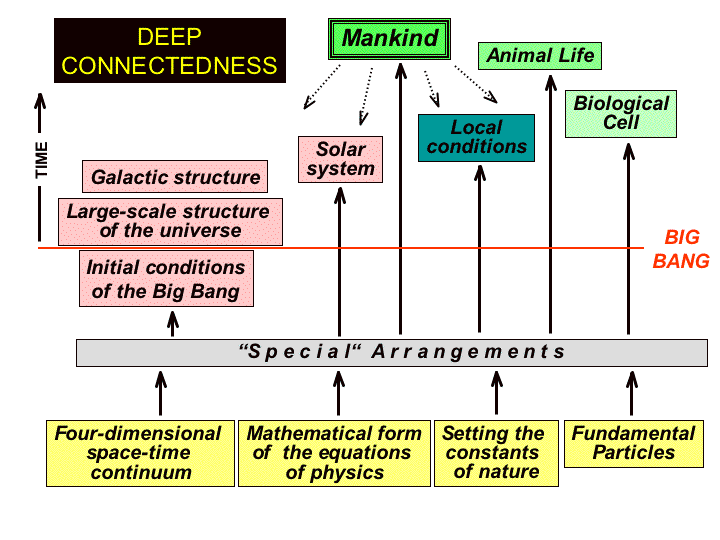
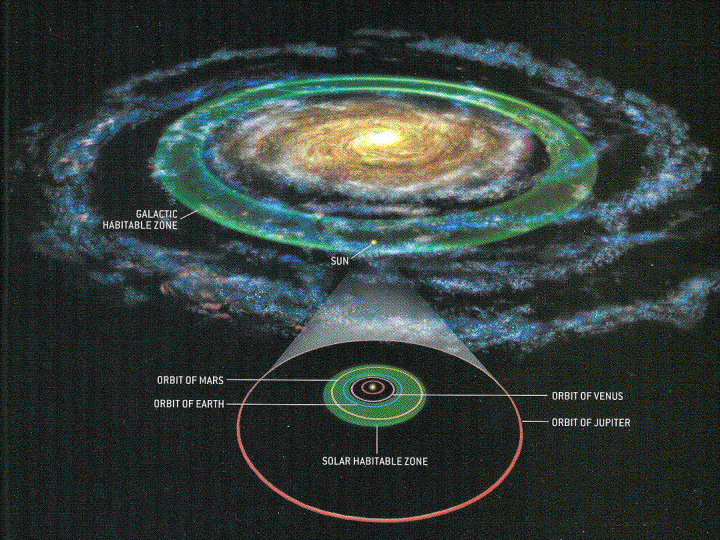

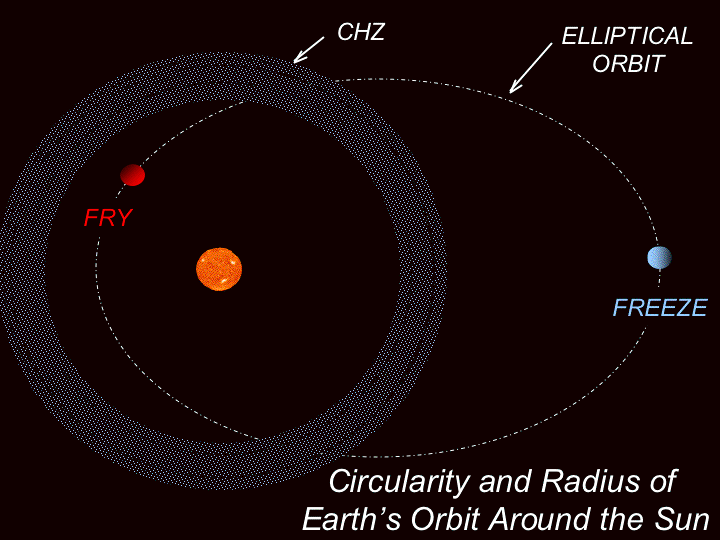
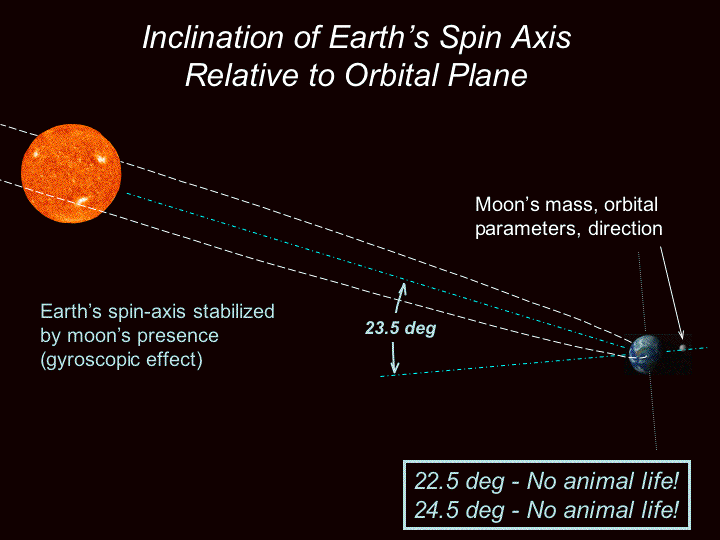

Last edited by Otangelo on Sat May 25, 2024 12:51 pm; edited 187 times in total



